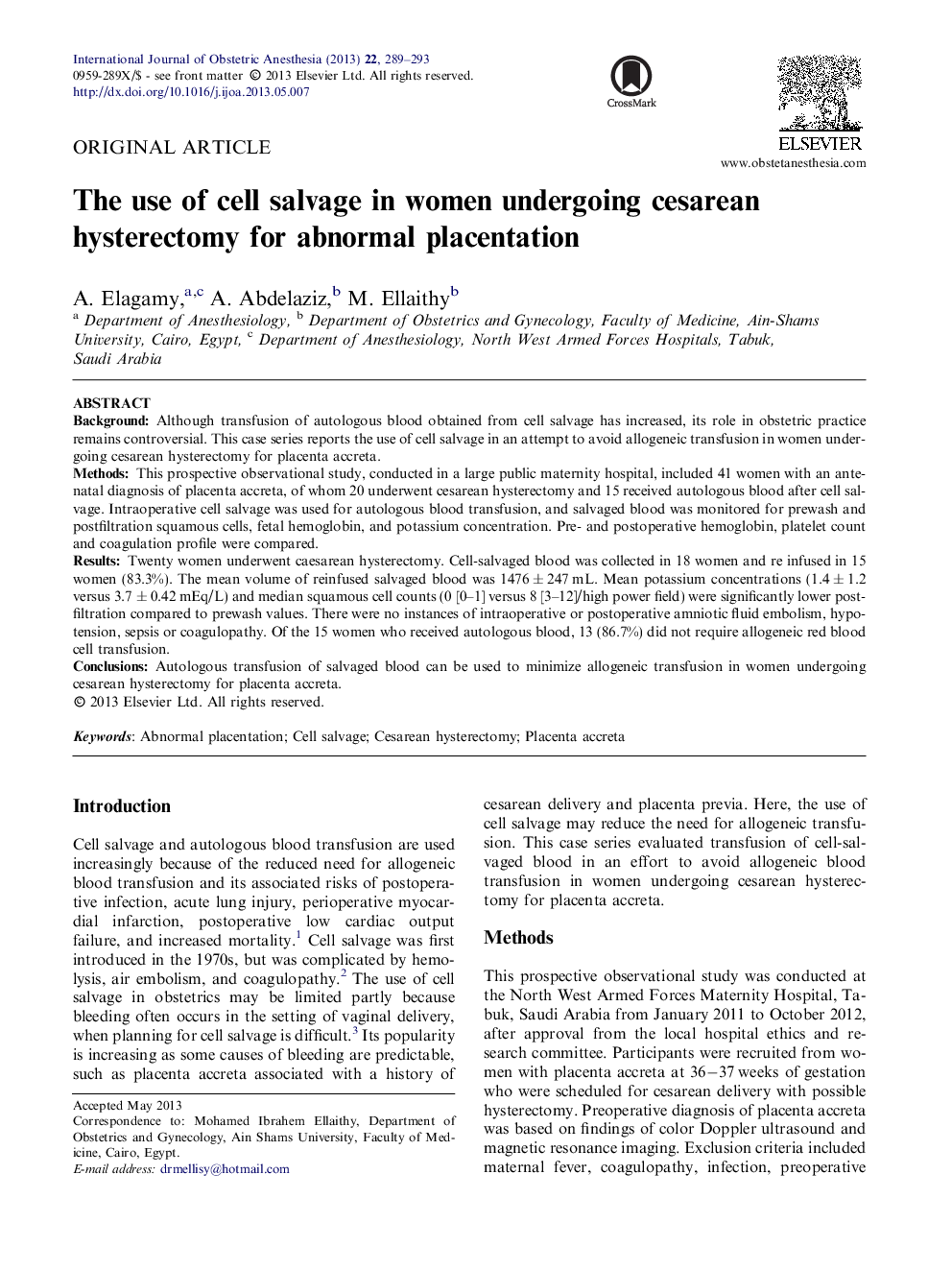| Article ID | Journal | Published Year | Pages | File Type |
|---|---|---|---|---|
| 2757805 | International Journal of Obstetric Anesthesia | 2013 | 5 Pages |
BackgroundAlthough transfusion of autologous blood obtained from cell salvage has increased, its role in obstetric practice remains controversial. This case series reports the use of cell salvage in an attempt to avoid allogeneic transfusion in women undergoing cesarean hysterectomy for placenta accreta.MethodsThis prospective observational study, conducted in a large public maternity hospital, included 41 women with an antenatal diagnosis of placenta accreta, of whom 20 underwent cesarean hysterectomy and 15 received autologous blood after cell salvage. Intraoperative cell salvage was used for autologous blood transfusion, and salvaged blood was monitored for prewash and postfiltration squamous cells, fetal hemoglobin, and potassium concentration. Pre- and postoperative hemoglobin, platelet count and coagulation profile were compared.ResultsTwenty women underwent caesarean hysterectomy. Cell-salvaged blood was collected in 18 women and re infused in 15 women (83.3%). The mean volume of reinfused salvaged blood was 1476 ± 247 mL. Mean potassium concentrations (1.4 ± 1.2 versus 3.7 ± 0.42 mEq/L) and median squamous cell counts (0 [0–1] versus 8 [3–12]/high power field) were significantly lower postfiltration compared to prewash values. There were no instances of intraoperative or postoperative amniotic fluid embolism, hypotension, sepsis or coagulopathy. Of the 15 women who received autologous blood, 13 (86.7%) did not require allogeneic red blood cell transfusion.ConclusionsAutologous transfusion of salvaged blood can be used to minimize allogeneic transfusion in women undergoing cesarean hysterectomy for placenta accreta.
